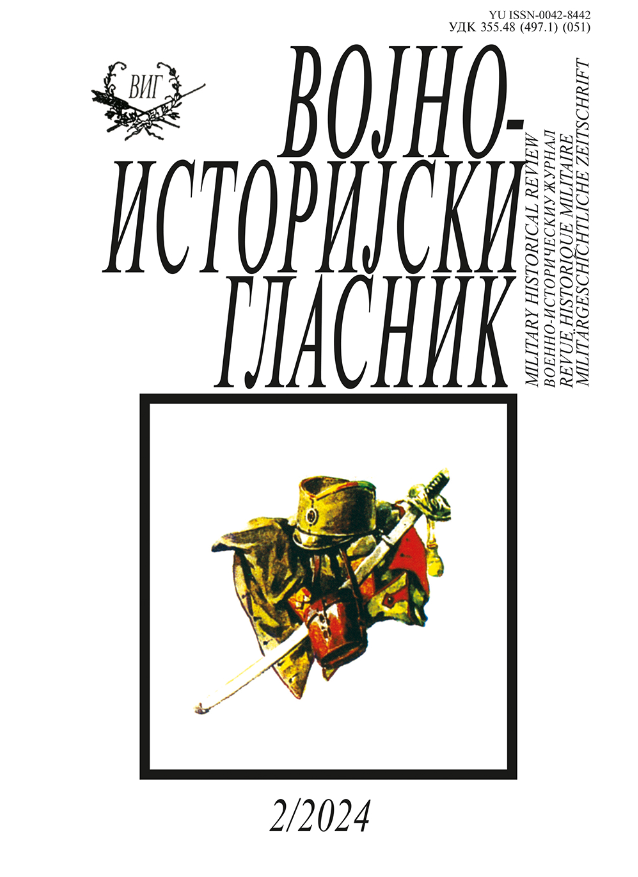ЦИВИЛНЕ ЖРТВЕ ДРУГОГ СВЕТСКОГ РАТА У СРЕЗУ САРАЈЕВО: ОПШТИ ПРЕГЛЕД И КВАНТИФИКАЦИЈА
CIVIL VICTIMS OF THE SECOND WORLD WAR IN THE COUNTY OF SARAJEVO: GENERAL OVERVIEW AND QUANTIFICATION
Author(s): Boris Tomanić, Nebojša Stambolija, Dragan CvetkovićSubject(s): Local History / Microhistory, Military history, Victimology, WW II and following years (1940 - 1949), Fascism, Nazism and WW II
Published by: Institut za strategijska istraživanja
Keywords: WWII; Bosnia and Herzegovina; Sarajevo County; crimes; genocide; civil victims; census of victims of war
Summary/Abstract: After the German occupation of the Kingdom of Yugoslavia and its dismemberment, the territory of Bosnia and Herzegovina became part of the Independent State of Croatia. Immediately after taking power, the Ustasha regime began the systematic persecution and physical extermination of Serbs and Jews in particular, but also of anyone who opposed it. Initially, the more respected members of these peoples, mostly men, were killed, and in the second half of 1941 a genocidal policy was initiated that led to the almost complete extermination of Sarajevo’s Jewish population in Jasenovac and other camps by August 1942 (Holocaust).However, the crimes against Muslims were most intense in this area, especially in late 1941 and early 1943, when the Chetnik units committed most of the crimes against the Muslim population, which at certain moments took on a genocidal character. Crimes were committed until the very end of the war. From February to April 1945, the Ustasha policy did not stop, so that these days in Sarajevo are remembered as the “bloody tyranny” of Vjekoslav Maks Luburić. Although several attempts had already been made, the systematic census of the victims of the Second World War on the territory of Yugoslavia was only started after the decision of the Federal Executive Council of 11 May 1964. The census initially had an ideological component, which later turned but to be its biggest flaw, as it was decided not to include people who “died in quisling organisations”. As the number of people recorded was far from the reported war victims (1,706,000) and the census therefore did not fulfil its original purpose of collecting war reparations, its use was banned. This ban lasted until 1992, i.e. until the collapse of the Yugoslav state. In 1995, the Genocide Victims’ Museum began to systematically analyse the results of this census. With this work, the total number of registered war victims increased by about 60,000, of which more than half of the newly registered victims came from the territory of Bosnia and Herzegovina. The census was conducted according to the territorial organisation of Bosnia and Herzegovina at the time of the census, according to which the Republic was divided into six large counties. One of them was the Sarajevo County, which included 30 municipalities. Since the ideological component in conducting the census of war victims had the least methodological impact on the counting of the civilian population, which is why the civilian population was counted most thoroughly, we have analysed the civilian war victims from this area in more detail in this article. A total of 171,224 civilian casualties were counted in the territory of Bosnia and Herzegovina, and 38,110 civilian casualties were counted in the area that later became the Sarajevo County. Most of these victims were Muslims (41.35%), followed by Serbs (28.65%), Jews (24.18%) and Croats (2.90%). All other nationalities were represented by 2.92%. If the civilian victims are analysed according to gender structure, it is noticeable that almost two thirds of the victims were male. Men were killed most frequently in 1941 and 1942, women in 1942 and 1943. When analysing the age structure, it is easy to see that most of the majority of victims were between the ages of 15 and 64.
Journal: Vojnoistorijski glasnik
- Issue Year: 2024
- Issue No: 2
- Page Range: 47-74
- Page Count: 28
- Language: Serbian

